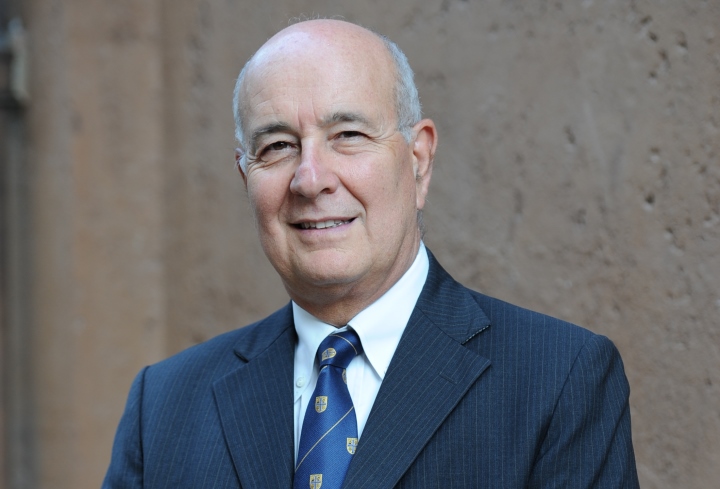
John Cabot University is an American liberal arts university in the heart of Rome, Italy. Join our welcoming international community and gain the knowledge and skills you need to build a promising future anywhere in the world.
John Cabot University, founded in 1972, is an independent, four-year liberal arts university offering undergraduate degrees, graduate degrees, and study abroad programs to English-speaking students from all over the world.
Envision yourself in a vibrant, historic city, studying where some of the world's most celebrated scholars and artists once lived. At JCU, you can earn your undergraduate or graduate degree in an unparalleled learning environment in the heart of the Trastevere neighborhood.
Whether your interests lie in the arts, sciences, business, or humanities, we will support you on your journey with a personalized academic experience.
Join our campus clubs and student activities and experience Italy like a local, participating in trips that offer a deeper understanding of the history surrounding you.
Your adventure begins here.
John Cabot was an Italian navigator and explorer. His daring journeys in the 15th century opened new waters, set the stage for the exploration of North America, and established a lasting link between Italy and the Americas that has persisted for over 500 years.
In Cabot's honor, our mission is to inspire the next generation of bold, global citizens and empower them to make a positive impact on the world.
JCU is accredited by the Middle States Commission on Higher Education, an institution recognized by the U.S. Secretary of Education and the Council for Higher Education Accreditation (CHEA).
The Frank J. Guarini School of Business is accredited by the Association to Advance Collegiate Schools of Business (AACSB).

A strong and dedicated Board of Trustees is John Cabot University's most vital guarantee of strategic success. The Board of Trustees appoints and directs the President who, in turn, manages the University. It provides vital policy leadership and oversight in critical areas as well as oversees the financial performance of the University. Its members are long-range planners who help define the philosophy of the University. They offer their knowledge and experience as well as financial support to help ensure the success of the University in its mission and commitment to education.
John Cabot University is fortunate to have an exceptionally gifted and dedicated Board of Trustees. Each individual member has contributed in significant ways to make John Cabot University the wonderful institution it is today.
| Board of Trustees | ||
|---|---|---|
|
Comm. Salvatore Salibello, Chair |
Comm. Avv. Frank J. Desiderio, Vice Chair |
Cav. Prof. Portia Anne Prebys, Vice Chair |
|
Comm. Stefano Acunto |
Cav. Lav. A. Reza Arabnia |
Robert Leon Buly, M.D. |
|
Cav. Vivian Cardia |
Mr. William A. Cavendish |
Mr. James Colucci |
|
Frà John T. Dunlap, Esq. |
Mr. Frank L. Fekete |
Mrs. Kristin Frohring Kushlan Finkelstein |
|
Ms. Paula Frohring |
Angelo J. Genova, Esq. |
Avv. Prof. Lucio Ghia |
|
Hon. Frank J. Guarini, Chair Emeritus |
Dr. Munr Kazmir |
Alexandria J. Maloney, MPA |
|
Hon. William J. Martini |
Ms. Carol M. Maurer |
Ms. Amy Mazzolin |
|
Mr. John Meditz |
Steve Menzies |
Mr. Alexander Mirabella |
|
Mr. Joseph A. Panepinto, Sr. |
Dr. Franco Pavoncello |
Mr. Robert Robotti |
|
Mr. Francesco Ruspoli |
Mr. Braden Smith |
Ms. Kem Turner |
|
Mr. Angelo Vivolo |
|
|
The Annual Report showcases significant events and developments in the past fiscal year at John Cabot University. It features a message from JCU President Franco Pavoncello, information about academics, faculty, enrollment, alumni, and career services, as well as a financial section highlighting the University's overall fundraising achievements.
The US government requires institutions which offer federal student loans to disclose the following student consumer information. If you require any further information about the content, please contact us.
Accreditation, Licensing, and Memberships
Undergraduate Majors and Minors
Graduate Programs
Transfer Credit and Articulation Agreements
Students with Disabilities
Housing
Instructional Facilities
Information Technology Services
Student Financial Aid Information
Consumer Information about US Federal Loans
Health and Safety Alerts
U.S. Center for Disease Control: Travelers’ Health
Health and Counseling Information
Discrimination and Harassment
Health for International Travel to Italy
Safety for US Citizens International Travel to Italy
Campus Security
Educational Outcomes
Career and Job Placement Services
Graduate School
Tuition and Fees
Cost of Attendance
Payment Policy and Refund Options
Withdrawal or Leave of Absence Policy
Student Life
Privacy of Student Records
Copyright Infringement Policies
Avoiding Plagiarism
Institutional Review Board
Immigration Services





